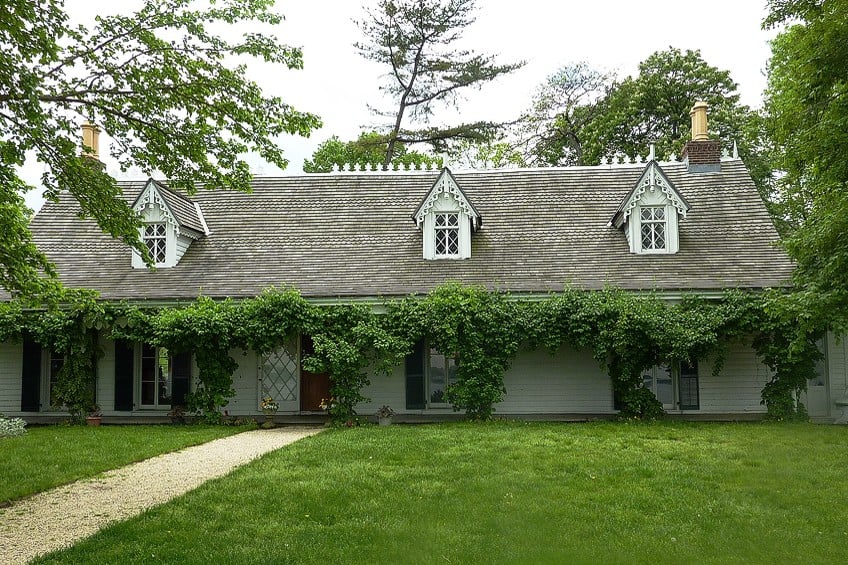Oldest Building in New York City – 10 Old Buildings to Know
What is the oldest building in New York City? The Big Apple is one of the most famous cities in the world and it is also one of the oldest cities in the United States. This means that some of the oldest buildings in the country are located in New York City. This article will look at ten of the oldest buildings in New York City and discuss some of their history, when they were built, who built them, and how they are used today. Keep reading to learn more about the oldest buildings in New York City!
Contents
- 1 Ten of the Oldest Buildings in New York City
- 1.1 Wyckoff House (1652) in Brooklyn
- 1.2 John Bowne House (1661) in Queens
- 1.3 Billiou–Stillwell–Perine House (1662) in Staten Island
- 1.4 Abraham Manee House (1670) in Staten Island
- 1.5 Britton Cottage (1671) in Staten Island
- 1.6 Jans Martense Schenck House (1676) in Brooklyn
- 1.7 Conference House (Before 1680) in Staten Island
- 1.8 Philipse Manor Hall State Historic Site (1682) in Yonkers
- 1.9 Alice Austen House (1690) in Staten Island
- 1.10 Old Quaker Meeting House (1694 – 1719) in Queens
- 2 Frequently Asked Questions
Ten of the Oldest Buildings in New York City
The history of buildings in NYC is a fascinating thing. Most structures past a certain age do not manage to survive until the present. This is especially the case with buildings made out of wood, and the oldest house in NYC, as well as many of the oldest buildings in the United States, were made of wood.
This means that these structures surviving for hundreds of years is because of strong upkeep and a desire for preservation.
We are going to look at the first building in NYC alongside many of the other oldest buildings in the famous city. Only one of these buildings maintains its original purpose to some extent while most of them have since been turned into historic sites and tourist attractions. However, the history of these buildings in NYC is still worth exploring.
Wyckoff House (1652) in Brooklyn
| Architect | Wouter van Twiller (1606 – 1654) |
| Date Constructed | 1652 |
| Function | Historic house |
| Location | Brooklyn, New York City, United States |
The Wyckoff House is the oldest house in NYC. Or at least it’s the oldest house in the city that is still standing. This house is a Dutch Colonial frame house, and it was one of the very first that was constructed by Europeans in the region. There have been various additions made to the structure over the centuries, and in recent years, it has been used as a house museum that’s open to the public for tours and viewings.
The house is maintained to this day as a historic landmark in both the country and the city as the first building in NYC.
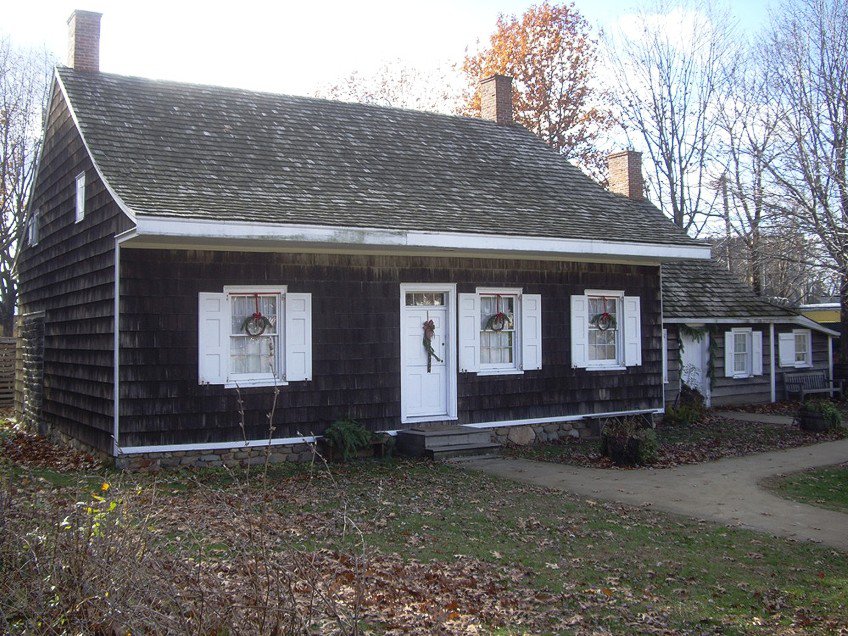
John Bowne House (1661) in Queens
| Architect | John Bowne (1627 – 1695) |
| Date Constructed | 1661 |
| Function | Historic house and museum |
| Location | Queens, New York City, United States |
The John Bowne House is another of the oldest buildings in New York City. This one is located in Queens and was built as a residence. However, the history of the building is quite different from most residences that because it was used as a meeting place for Quakers. This even led to the arrest of the man for whom the house is named, John Bowne.
The house itself is made in an Anglo-Dutch Colonial style and, thanks to its important role in the history of buildings in NYC and the nation as a whole, it has become a museum that looks at the role of the Quakers in the United States.
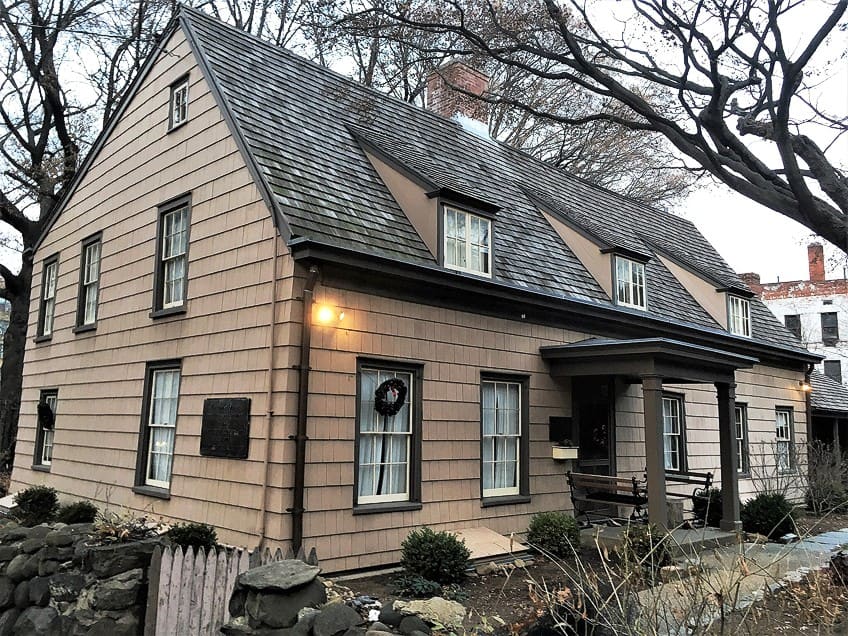
Billiou–Stillwell–Perine House (1662) in Staten Island
| Architect | Pierre Billiou (1632 – 1708) |
| Date Constructed | 1662 |
| Function | Historic house |
| Location | Staten Island, New York City, United States |
The Billiou–Stillwell–Perine House is one of the oldest buildings in New York City and an early example of a Dutch Colonial house. In more specific terms, this is actually the oldest structure on Staten Island. Or at least, the oldest standing building. This house was originally a residence that then passed through the familial line, which led to the variety of last names attached to the name of the structure. The house eventually became a landmark and is occasionally open to the public.
It is notable for its jambless fireplace, its sloping roof, and the large beams that make up the ceiling structure.
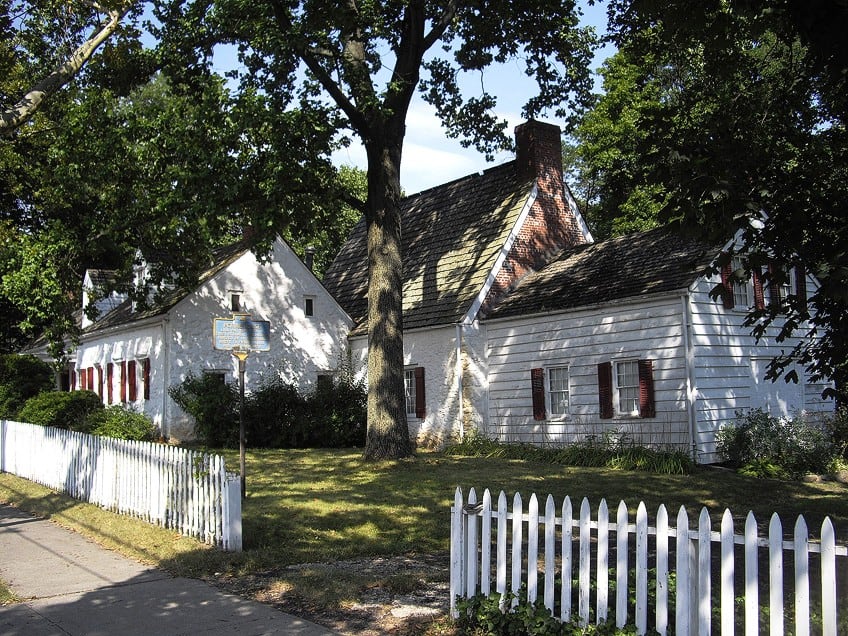
Abraham Manee House (1670) in Staten Island
| Architect | Paulus Regrenier (1625 – 1676) |
| Date Constructed | 1670 |
| Function | Historic house |
| Location | Staten Island, New York City, United States |
The Abraham Manee House is another of the Dutch Colonial residences that were located on Staten Island in the earliest period of this region’s European settlement. This house, which has been expanded extensively to include stone additions, was the property of one of the many French Huguenots who had fled Europe because of religious persecution. Many of the oldest Dutch houses in New York City have a similar history attached to those who resided within them.
This history house has since become open to the public and can be accessed by those interested in learning about this fascinating period of American history.
Britton Cottage (1671) in Staten Island
| Architect | Unknown |
| Date Constructed | 1671 |
| Function | Museum |
| Location | Staten Island, New York City, United States |
The Britton Cottage is one of the few early houses on Staten Island from the 17th century that have managed to survive into the present day. In this case, this old cottage was an example of an Anglo-Dutch Colonial style that made use of stone and wood in its construction and is noted for its use of a central chimney, symmetrical façade, and steeply pitched roof.
The house was originally constructed as a courthouse and governmental facility, but it eventually became a residence. In the present day, it is part of Historic Richmond Town and is open for public viewing.
Jans Martense Schenck House (1676) in Brooklyn
| Architect | Jan Martense Schenck (1670 – 1687) |
| Date Constructed | 1676 |
| Function | Museum |
| Location | Brooklyn, New York City, United States |
The Jans Martense Schenck House is a late 17th-century house that has a bit of a strange location in comparison to some of the other old buildings on this list. This Anglo-Dutch Colonial-style house was actually completely moved to a new location in 1964 and is currently situated within the Brooklyn Museum as an exhibit. The house makes use of standard colonial designs from the period, such as a high-pitched roof, wooden siding in the exterior walling, and interior walling that was connected to the support structure with stucco.
The house was significantly renovated and expanded after its initial construction.
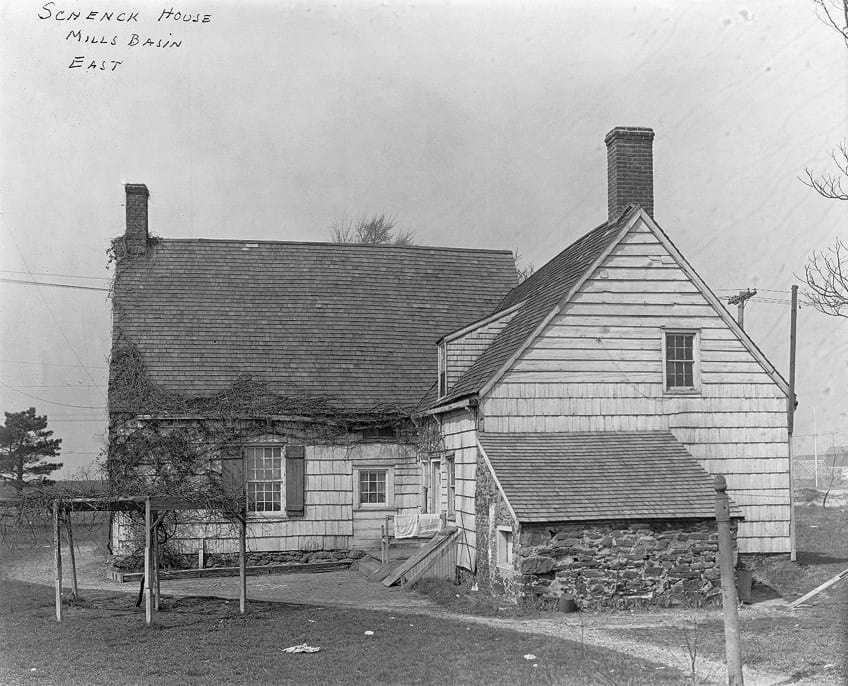
Conference House (Before 1680) in Staten Island
| Architect | Christopher Billopp (1650 – 1725) |
| Date Constructed | Before 1680 |
| Function | Historic house |
| Location | Staten Island, New York City, United States |
The Conference House is a stone house in Staten Island, and it was built by Captain Christopher Billopp. The house itself is situated near a park that shares its name: Conference House Park. This particular house has attained this name because of its use as a location for an attempted peaceful end to the American Revolutionary War. It was the location of a famous meeting between several American Founding Fathers, like Benjamin Franklin and John Adams, and a representative from King George III.
This conference would ultimately fail in its diplomatic attempts, but the house itself would eventually become a national landmark and an important structure because of its connection to the political history of the United States.
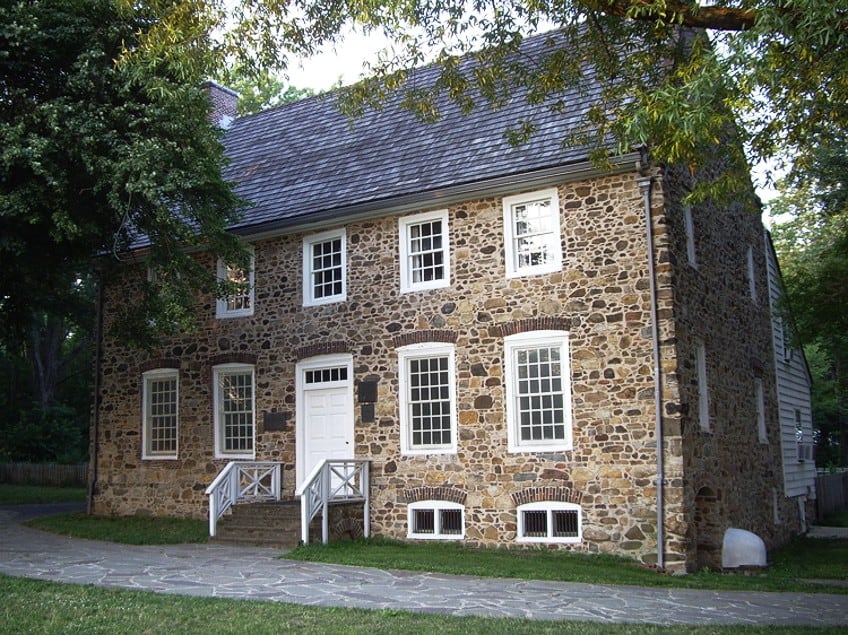
Philipse Manor Hall State Historic Site (1682) in Yonkers
| Architect | Frederick Philipse I (1626 – 1702) |
| Date Constructed | 1682 |
| Function | House museum |
| Location | Yonkers, New York City, United States |
The Philipse Manor Hall State Historic Site was originally a manor house located in Yonkers. It has since become a historic house museum because of its connection to the history of the region. The house was constructed by a self-made businessman who spent decades developing the house. This is also why the building is a fascinating blend of architectural styles. There are instances of Dutch Colonial architecture alongside Federal, Georgian, and Victorian styles. However, the house was confiscated during the American Revolution as the family in charge of it had sworn their allegiance to the British crown.
This allowed the manor house to instead be turned into a variety of public structures, such as serving as a court and police station.
Alice Austen House (1690) in Staten Island
| Architect | Jacob Johnson (Unknown – 1705) and Lambert Johnson (Unknown – 1719) |
| Date Constructed | 1690 |
| Function | Museum |
| Location | Staten Island, New York City, United States |
The Alice Austen House is another of the most interesting old houses in the city. The house has its origins as a tiny, one-room structure in 1690, but it expanded over the decades until it was eventually a far larger structure. The woman whose name is attached to the house, Alice Austen, was a photographer whose grandfather purchased the house in 1844. He made Gothic Revival additions to the building, but the structure is most famous for being the location at which Alice Austen took many of her photos.
She was eventually evicted from the property, and the house was nearly demolished, but through the work of preservationists, it was able to stay standing to this day.
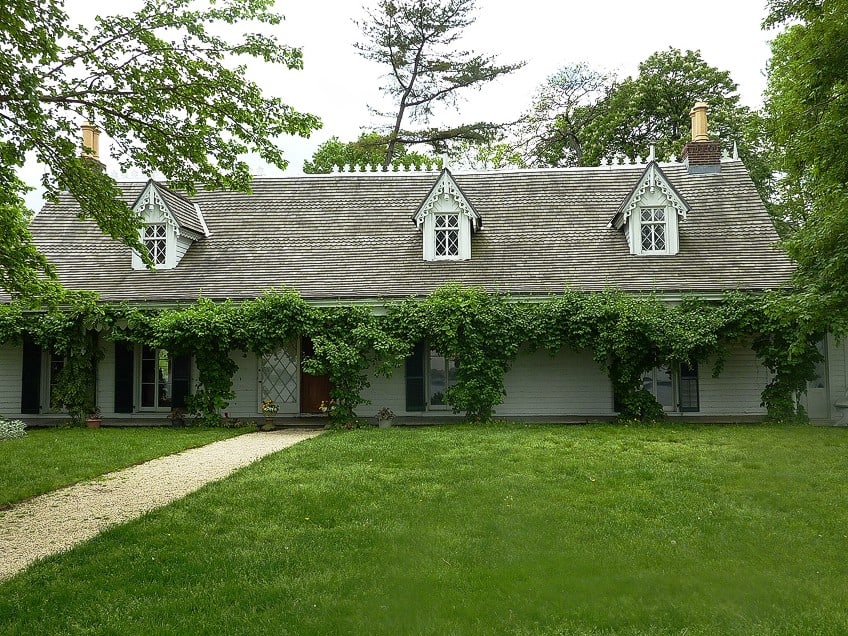
Old Quaker Meeting House (1694 – 1719) in Queens
| Architect | John Bowne (1627 – 1695) |
| Date Constructed | 1694 – 1719 |
| Function | Quaker meetings and house of worship |
| Location | Queens, New York City, United States |
The Old Quaker Meeting House is one of the oldest buildings in New York City and also one of the oldest Quaker meeting places in the city. The location was first constructed as a Quaker house of worship and served as a location for others to congregate. It was constructed by John Bowne and several other early Quaker individuals. Because of the Quaker’s presence, this old building is one of the oldest houses of worship in the entire state.
The house, which makes use of a wooden frame with a gambrel roof, was integral to the establishment of religious tolerance in the region because of a court case involving John Bowne.
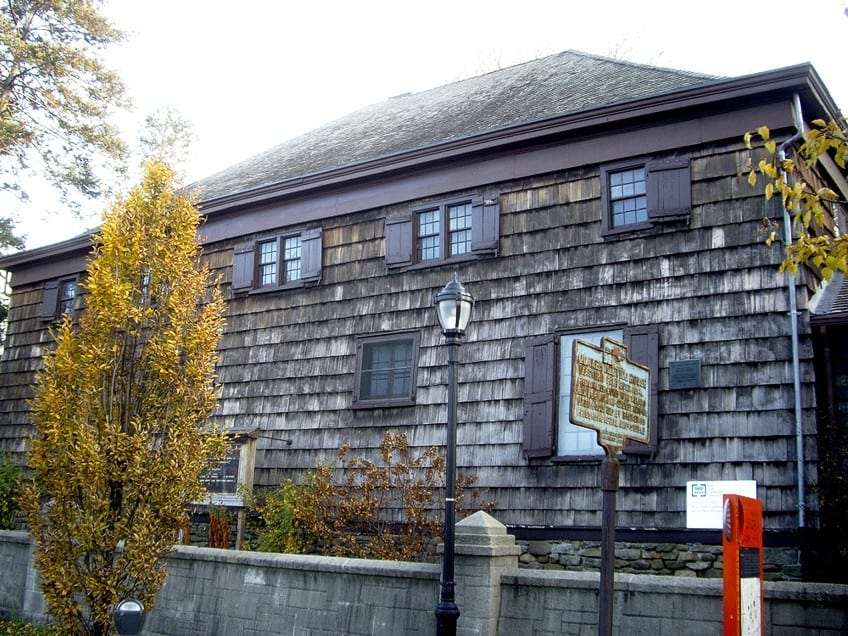
This concludes our look at the history of buildings in NYC. We have examined ten of the oldest buildings in New York City, and even the oldest house in NYC that still stands to this day. We discussed each of these buildings in terms of their history, their construction, who built them, and what they are used for today. Hopefully, this means that you have learned a good deal about the history of buildings in NYC, but always remember that there are many more buildings out there that are worth learning about as well.
Frequently Asked Questions
What Is the Oldest Building in New York City?
The oldest building in New York City is the Wyckoff House. This building may not necessarily be the first building in NYC, but it is certainly the oldest one still standing. It was built in 1652 and served as a residence. However, it has not served that function for many years, and it has instead served as a museum.
How Old Is New York City?
New York City is a very old city, but it was only officially declared under its present name as a city in 1898. However, it was called New Amsterdam when it was first settled by the Dutch, and these roots go back to 1624. This is not the whole story though, as the oldest settlement in the region was an Algonquin Native American people called the Lenape. They were there for several thousand years before any Europeans sailed into the Western Coast of the United States.
What Is the Oldest Architectural Style in New York City?
The oldest architectural style that can generally be attributed to New York City is the Dutch Colonial Style. The colonial history of buildings in NYC originates with the Dutch settlers in the region that would later be called New York City, and so the oldest European buildings would have been Dutch in origin. These Dutch Colonial buildings made use of pitched roofs, central chimneys, wooden frames, and symmetrical façades.
What Is the Oldest Church in New York City?
The oldest church in New York City is a difficult question to answer. There can be little doubt that the first European settlers in the region would have established a church, but as the earliest structures were made of wood, many did not last through the centuries. This means that the oldest church is probably St. Paul’s Chapel, which was constructed between 1764 and 1766.
What Is the Oldest Colonial Building in the United States?
The oldest colonial building in the United States is not located in New York City. Instead, it is located in New Mexico. There is a structure called the Palace of the Governors of Sante Fe, and it was first constructed in 1610. It has changed hands several times over the course of its existence. It originated with the Spanish, then became a Mexican governmental structure, and finally an American one. It is now a museum.
Justin van Huyssteen is a writer, academic, and educator from Cape Town, South Africa. He holds a master’s degree in Theory of Literature. His primary focus in this field is the analysis of artistic objects through a number of theoretical lenses. His predominant theoretical areas of interest include narratology and critical theory in general, with a particular focus on animal studies. Other than academia, he is a novelist, game reviewer, and freelance writer. Justin’s preferred architectural movements include the more modern and postmodern types of architecture, such as Bauhaus, Art Nouveau, Art Deco, Brutalist, and Futurist varieties like sustainable architecture. Justin is working for artfilemagazine as an author and content writer since 2022. He is responsible for all blog posts about architecture.
Learn more about Justin van Huyssteen and about us.
Cite this Article
Justin, van Huyssteen, “Oldest Building in New York City – 10 Old Buildings to Know.” artfilemagazine – Your Online Art Source. October 18, 2023. URL: https://artfilemagazine.com/oldest-building-in-new-york-city/
van Huyssteen, J. (2023, 18 October). Oldest Building in New York City – 10 Old Buildings to Know. artfilemagazine – Your Online Art Source. https://artfilemagazine.com/oldest-building-in-new-york-city/
van Huyssteen, Justin. “Oldest Building in New York City – 10 Old Buildings to Know.” artfilemagazine – Your Online Art Source, October 18, 2023. https://artfilemagazine.com/oldest-building-in-new-york-city/.


